Winter Tips for Your Home: How To Prepare for the Cold Weather Ahead
Posted
on November 24, 2021
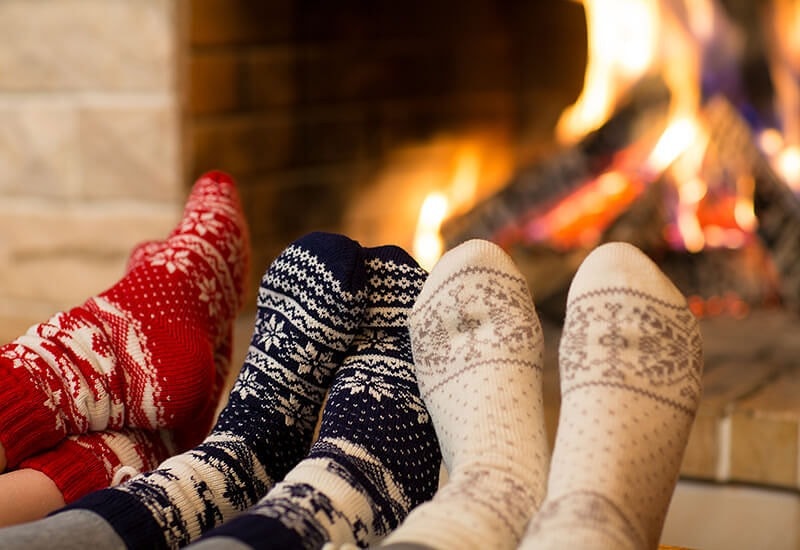
Winter has hit across much of the country and the days and weeks ahead are likely filled with colder temps and blustery winds. Whether you dread the cold, or you’re looking forward to fluffy snowflakes, getting your home ready now will help you have peace of mind going into the winter season. There are a few winter home improvement projects you can take on to prepare your home for the cold weather ahead.
Winter Home Maintenance Checklist
Winter preparation for your home can begin in late autumn. Before the cold weather hits, be sure to check the items off of this list.
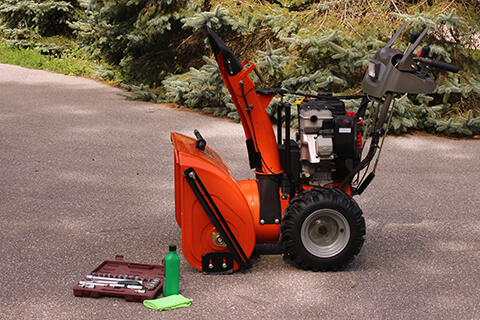
1. Maintain and repair tools
Ensure that blowers are properly maintained with fresh oil, gasoline, and new spark plugs. Purchase a sufficient supply of ice melt for sidewalks and driveways. Take measures to protect and stow all seasonal tools such as lawnmowers and inspect snow blowers and shovels for functionality.
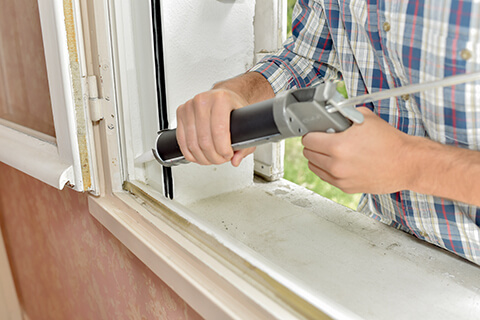
2. Weatherize Windows, Doors and Other Parts of Your Home
Consider investing in weather stripping for windows, entryway doors and anywhere air could be escaping or penetrating. This includes sealing air vents and foundation cracks. If you have any concerns about how well your home is sealed, you may consider consulting a professional or your local energy company.
Inspect and weatherize your windows for winter. If your windows are outdated, worn or in need of an upgrade, consider a winter window replacement. You can also opt to replace your doors if you find they need to be updated.
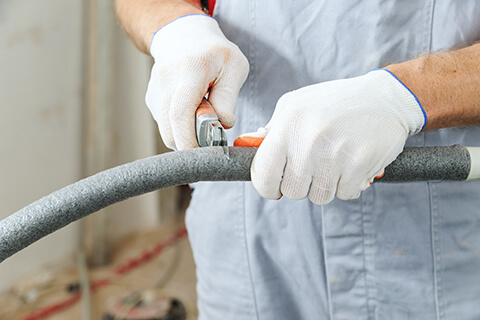
3. Insulate Pipes To Help Prevent Freezing
Frozen pipes can burst and lead to expensive repairs. Pay special attention to pipes in unheated (or poorly heated) areas of your home such as the basement or utility room. Be sure to disconnect outside water hoses. Keep areas with pipes at a minimum of 55 degrees Fahrenheit to prevent freezing. If the pipe is in an especially cold area, consider a slow drip to avoid freezing. If your pipes do freeze, thaw carefully with steady, warm air. Use heat sources, such as space heaters or hair dryers cautiously. Furthermore, should you discover a frozen pipe, check all water sources as it’s likely there are other frozen pipes as well.

4. Clean Your Fireplace and Chimneys
Regular maintenance is essential to energy efficiency, but a poorly maintained fireplace can also be a safety hazard. Debris or residue in your chimney can lead to fire and poor ventilation. Be sure to clean your fireplace and chimney regularly.
5. Hire a Professional To Inspect Your HVAC System
Aside from extending the life of your HVAC unit, regular HVAC maintenance could also improve heating efficiency, which can help you keep your home warm and comfortable in the cold. If your HVAC system is in need of repair, the increased usage during the winter months could cause your system to break down when you need it the most.
6. Check Your Roof for Damage
To weatherize your home for winter, you will also want to replace missing or damaged shingles to help avoid a leaky roof. While you’re at it, repair or replace deteriorated flashing around gutters, skylights, and chimneys. Use roofing cement to seal leaks where air or water could penetrate. Consider purchasing a roof rake to clear snow from your roof to avoid excess weight.
7. Clean and Repair Gutters and Drains
Remove any leaves, sticks or other debris so water and snowmelt don’t overflow the guttering. Make sure downspouts are secure and extend at least five feet away from your foundation to help prevent damage from melting snow. Extra water weight can loosen guttering and downspouts so be sure these are fastened properly. Lastly, ensure that openings are covered to help prevent pests like rodents, birds or insects from nesting.
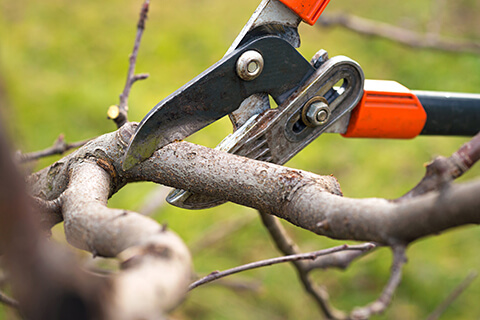
8. Trim Trees and Prune Bushes
The extra weight of snow can increase the burden on tree limbs, which can potentially increase the likelihood of breakage. Depending on the size of the limb and proximity to your house, this can be dangerous. Take extra precautions by brushing the snow off of tree limbs and bushes after each snowfall as soon as weather permits. A better solution would be to get your home ready for winter by trimming trees in the fall.
How to Clean Downspouts
Downspouts are just extensions of your gutter. Gravity and a little running water from your gutter cleaning are often enough to clear everything out.
Sometimes, clumps and clogs can get lodged on their way down. Since you can’t see or access where the problem is, it’s much harder to clear out. If you don’t see water flowing freely out to your lawn or landscaping — or worse, it’s getting backed up into the gutters — try these downspout cleaning tips:
- Detach any horizontal extension pipes to give you better visibility and access to the downspout.
- Attach a nozzle to your hose and flush out your downspout with water at a higher pressure.
- If the problem persists, try a pressure washer at a lower setting that won’t damage your piping.
- For the most difficult clogs, feed a plumbing snake from the top of the downspout until it meets the clog. Rotate the head until you no longer feel resistance and then recoil the plumbing snake.
- Run water from the hose through the downspout to wash away any remaining debris that could start another clog.
Winter Tips for Your Home: Preparing for Extreme Cold
Some areas of the country can experience bouts of extreme cold over the winter months. These “cold snaps” can be taxing on homes that are not outfitted to withstand certain temperatures. When extreme cold is forecast, be sure to prepare with these tips:
1. Purchase or Replace Your Emergency Supplies
Winter storms create the possibility of power outages and other emergency situations. Take the better-safe-than-sorry approach by stocking up on necessities should a winter emergency arise. Keep an inventory of bottled water, flashlights, batteries, non-perishable food items and first-aid supplies. As recommended by the American Red Cross, your emergency supplies should include a three-day supply of food and water and seven days’ worth of first-aid supplies for every family member. You should also stock extra blankets, winter clothing and wood or fuel for alternative heating. Prepare your car with emergency supplies as well. Your vehicle's winter survival kit should include warm clothes, boots, blankets, a flashlight with extra batteries and food.
2. Minimize Exposure to Outside Temps
When the temps drop outside, make sure that all doors and windows are securely closed and locked. Try to minimize the time your door is open when you enter and leave your home, and keep your garage doors closed. Keep blinds and curtains closed unless direct sunlight is hitting your window.
3. Circulate Warm Air Inside Your Home
Set your thermostat 2 to 4 degrees above your normal setting, and take programmable thermostats out of their regular routine to set on permanent hold. Make sure that all of the air vents and radiators in your home are unblocked so that the warm air has an unobstructed path into your home. You can also set ceiling fans to rotate in a clockwise direction to circulate the air within the home.
4. Keep Pipes From Freezing
Be sure to keep all areas with pipes heated to at least 20 degrees Fahrenheit. If you plan to be away during cold weather, leave the heat on in your home, set to a temperature no lower than 55 degrees Fahrenheit.
Cold winter months can be taxing on your family and your home, not to mention your wallet. But if you take the time to prepare, you and your family can spend more time drinking hot cocoa and eggnog without any unwanted anxiety.
At Pella Windows and Doors, we’re happy to help you get your home ready for the winter. Whether you’re ready to replace your windows and doors or aren’t sure where to start, our team will work with you to find a solution that’s best for you and your home. Contact us today for a free in-home consultation — and yes, we do offer window and door replacements in the winter.
When to Call in the Pros
These routine cleaning jobs sound easy enough for even the least handy of homeowners. But any time you’re on a ladder working at heights, safety is a major concern. When water is involved, it can make for a potentially slippery metal ladder, which increases your risk of a mishap.
If the heights, window sizes, window types or roof slopes of your home cause hesitation, consider bringing in a professional. You’ll likely find a variety of local services offering window and gutter cleaning near you. They have all the equipment and take all the precautions to make sure your windows, gutters and downspouts are debris-free.
You can also contact your local Pella service team when you need a window professional specifically. They can answer your window care and maintenance questions or schedule a service visit when you spot bigger window problems.
A clean set of windows, gutters and downspouts is an investment in your home. Whether you enlist professional help or do it yourself, you ensure that each part of your home looks — and works — great for years to come.
Schedule a free consultation to find windows and doors for your home.
